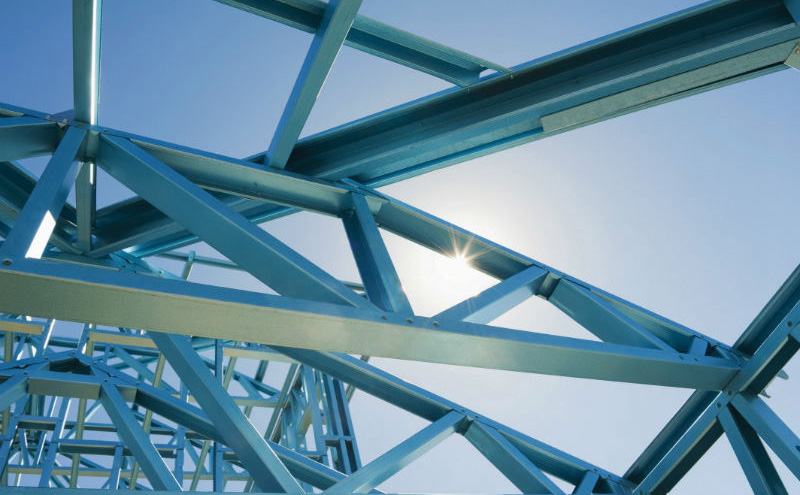
By David MacDonald, national hub programme director at the Scottish Futures Trust
IN recent years, governments and businesses across the world have been striving to make their operations and practices more sustainable.
The construction industry is a significant contributor to climate change, responsible for around 40% of global greenhouse gas emissions and consuming up to 40% of the world’s energy.
Our industry therefore has a vital role to play in reaching the climate change targets to achieve net zero carbon by 2045. The infrastructure we need, how it is paid for, the materials used, and where it is built – all need to be considered with a focus of net zero.
The situation is improving, with green construction practices increasingly becoming the norm. But while the government is driving this transition through various policies and initiatives, delivery will happen at industry and site level.
Designing, constructing, and operating buildings in a way that significantly reduces their carbon footprint requires a shift in mindset from traditional methods and materials and involves cultural, behavioural, and technical changes. This is the responsibility of everyone involved in planning, building, investing in, owning and operating Scotland’s infrastructure – and working together is key.
SFT’s Net Zero Public Sector Buildings Standard is designed to encourage collaboration between project stakeholders to make better decisions, as early as possible, to drive optimum solutions in new and refurbished buildings from a net zero perspective. Public bodies have already demonstrated significant reductions in emissions from their built estates by working collaboratively.
Meeting climate targets also represents a significant opportunity for the industry. New technologies, skills and jobs are the more immediate consequences of the industry taking a leadership position to respond proactively to the climate emergency.
While the carbon benefit will come over time, modernising the industry with new technology and expanding the skills and opportunities for young people through new ways of creating the built environment, may be more readily realised. This will make the industry more sustainable as a sector, enjoying greater efficiency, attractiveness to new talent and acting as a platform for innovation.
Designing buildings to be energy-efficient is vital, and the intervention must take place as early as possible in the procurement and delivery process. Building regulations stipulate minimum standards for energy efficiency in new construction, but improved results can be achieved by setting conditions of funding related to energy performance.
For example, to gain funding through the Scottish Government’s Learning Estate Investment Programme (LEIP), ambitious energy consumption levels must be met in operation. This funding condition has instigated a growth in new Passivhaus projects which local authorities have chosen as a method of meeting the target As well as reducing energy consumption, Passivhaus yields an immediate quality dividend as it significantly enhances attention to detail in terms of airtightness and thermal bridging.
As part of the LEIP, the £115m new schools development within the Dunfermline Campus is being delivered through SFT’s hub Programme by hub East Central for Fife Council. Not only is it being constructed to certified Passivhaus principles, it also incorporates offsite manufactured elements, improving efficiency and speed of construction which helps reduce the carbon impact.
It is planned that future LEIP projects will also be required to meet an embodied carbon target encompassing the building materials, transportation and construction activities.
One of the most significant ways to reduce the industry’s carbon footprint is to use sustainable materials like reclaimed timber, recycled steel, and natural stone. Using locally sourced materials can cut down the carbon emissions associated with transportation. Improving efficiency in their use, through proper waste management considerations, is also key. This should also have a beneficial impact on the cost of construction.
Historically, energy has been wasted through a simple lack of control of the way a building operates. The design of smart buildings can reduce energy consumption through the use of sensors which monitor energy use and adjust lighting, heating, and cooling systems as required.
Renewable energy sources such as solar and wind power can be used to power buildings and reduce dependence on the grid – and again, it’s better if they are incorporated during the design phase rather than trying to retrofit them later.
Just as early-stage intervention should be applied to design considerations, taking a whole-life carbon approach to the procurement of the physical estate will deliver sustained net zero outcomes. For example, renewables co-located near construction sites that consume large amounts of electricity can reduce carbon footprints of buildings before they are even occupied.
The emergence of new methodologies and innovation will, naturally, come at a cost – not all of which can be recovered through gains in energy efficiency alone. This is why there must be a realignment between available budgets and what the industry is required to deliver.
Meeting the climate challenge is a great opportunity for the construction sector to take a lead, by coming forward with fully costed ideas that consider environmental benefits alongside wider socio-economic effects, such as innovation and skills development.
Focusing on overall, long-term value will help justify any initial financial impact, to ensure momentum in the fight for a net zero world is accelerated.








